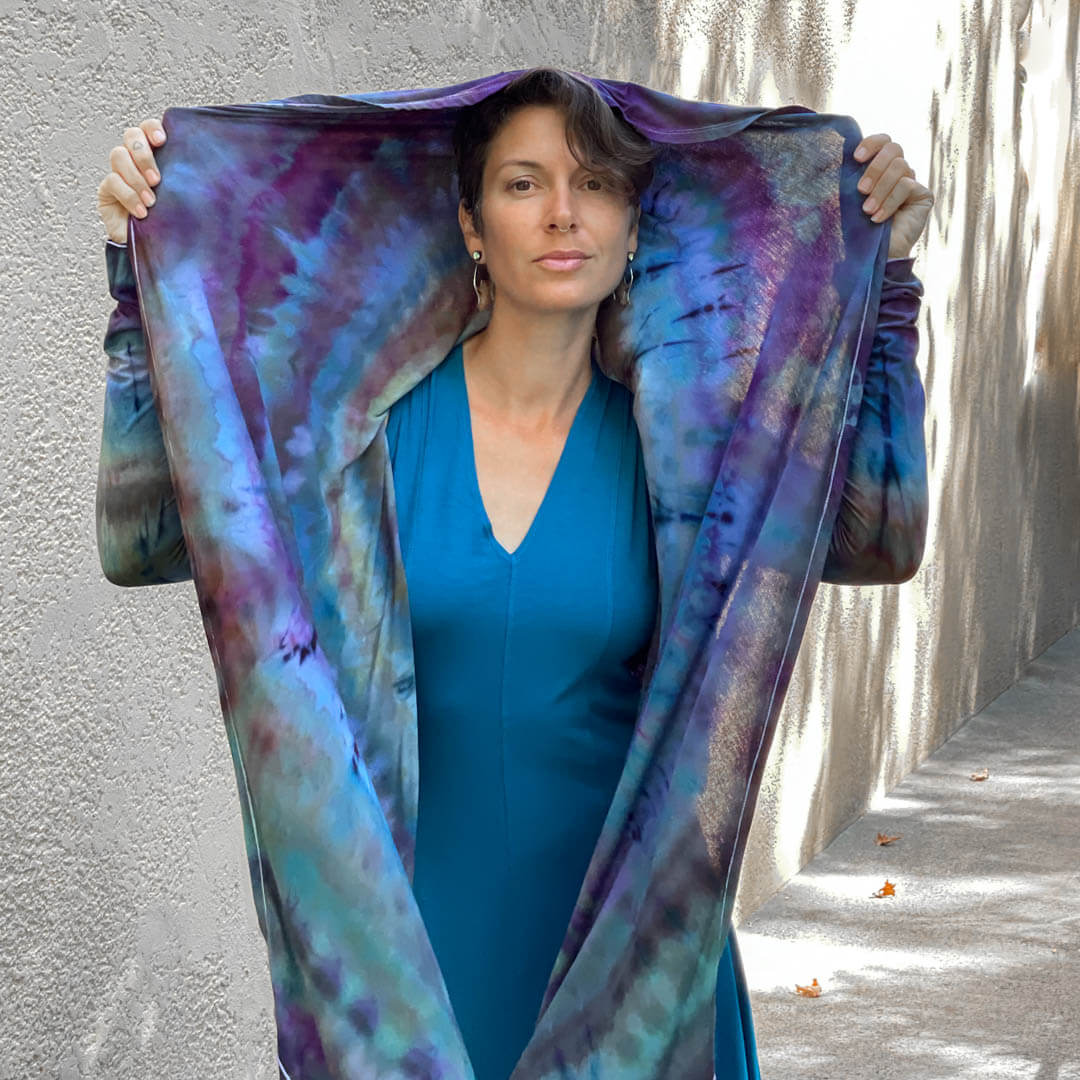What Is Low impact Tie-Dyeing?
April 6, 2021 – Cara Ucci

There are many ways we can be better towards Mother Earth by working with her instead of against her by cleaning up after ourselves, supporting the natural systems already in place that support life on this planet, and not just our own. As a small business, we do our best to minimize our carbon footprint, including the process by which our Hand-Dyed Collection gets its bright, rich, fade-resistant colors at the hands of Samantha Backer at SuperNaturalpdx: Low impact Tie-Dyeing.
Eco-Friendly Dyes
It all starts with an ice bath with low impact, fiber-reactive colors. You're probably saying, "Wow. What? What does all of that mean?" Let's peel back the layers a little. Low impact means that whatever the process is or the waste it creates, it causes minimal damage to the environment. In our case, the small-batch dye water, in which our designs have taken a bath, is drained after use. It then gets broken down by microbes in our soil and dissipates. Smaller batches mean better dissipation over a longer period of time = low impact. And fiber-reactive is just a fancy way of saying that, effectively, the dye molecule has become one with the cellulose fiber. It literally attaches to it. And it works best with fabrics made from cellulose fibers like ours: cotton, rayon, and bamboo jersey.
After, each design takes another bath to rinse out any of the dye that did not merge with the fabric, leaving behind stunningly deep colors that stand out and are fade-resistant, no matter how many times you wash it.
So, the next time you're looking for something that really pops with bright and rich color that stays, find out what the dyeing process is that it goes through to get that way. Is it safe for infants or chemically sensitive individuals? Is it dyed in large batches or small? If it isn't made in a low-impact dyeing process, we don't want it!
